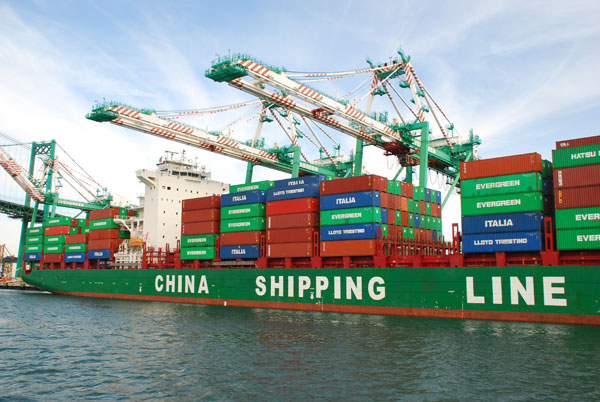U.S. beef claws and scratches to overcome a tariff disadvantage with Australia.
April 7, 2016

Despite the obstacles, the outlook for U.S. beef in Japan looks considerably brighter in 2016.
For more than a year, Australian beef has enjoyed a significant price advantage in Japan through tariff reductions achieved in the Japan-Australia Economic Partnership Agreement (JAEPA). This was one of the factors that caused U.S. beef exports to Japan to decline in 2015.
The tariff rate gap between Australian and U.S. beef widened further when the new Japanese fiscal year began on April 1 – Australian beef now pays 30.5% for chilled and 27.5% for frozen, compared with 38.5% for U.S. beef. This advantage was compounded in 2015 when both the Japanese and Australian currencies weakened severely versus the U.S. dollar.
Although the dollar remains relatively strong, exchange rates have moderated in 2016.
And that, says the U.S. Meat Export Federation (USMEF), is good news indeed. “The exchange rate situation is not quite as severe as last year, but the strong U.S. dollar is a reality that we simply have to manage through,” says Philip Seng, USMEF president and CEO. “This means reclaiming customers based on the unique, high-quality attributes of U.S. beef and working each and every day to build loyalty among Japanese consumers.”
As recent herd-rebuilding efforts finally take hold in the U.S., slaughter levels have begun to rise, increasing the availability of U.S. beef cuts typically exported to Asia. This has eased concerns among some Japanese importers that the U.S. industry may not be able to provide reliable, year-round supplies.

70+ photos showcasing all types of cattle nutrition
Readers share their favorite photos of cattle grazing or steers bellied up to the feedbunk. See reader favorite nutrition photos here.
“Last year those fears were intensified by the West Coast port crisis, which made it difficult to get chilled beef cuts to Asia in a timely fashion,” Seng explains. “But now, Japanese buyers are feeling more confident about their ability to secure U.S. beef.”
Seng recently returned from FOODEX, Asia’s largest food trade show, and from meetings with buyers, importers and distributors in Tokyo.
“FOODEX is an excellent reminder of just how fiercely competitive the Japanese market is,” he says. “I see so much in the media about Japan’s aging population and sluggish economy, yet there’s not a meat-supplying country on Earth that doesn’t want a larger piece of this market.”
Japan is also enjoying a tourism boom, which enhances opportunities for U.S. beef in the hotel and restaurant sectors. Last year, the number of foreign visitors to Japan jumped nearly 50% compared to 2014 – exceeding 20 million. The annual number of foreign tourists is expected to reach at least 30 million by 2020, when Tokyo will host the Summer Olympics, and the Japanese government has set a goal of pushing that total to 40 million.
U.S. beef accounts for 20% of Japan’s total beef consumption, while domestically-produced beef is about 40%. Japan’s beef production has decreased for the past three years, with limited supplies stimulating high prices.
Japan’s wagyu carcass prices are at near-record levels (averaging $9.80 per pound in February), and high feeder cattle prices indicate that beef production could decline again this year. Prices for wagyu feeders have increased about 80% in the past four years and set a new record in January, averaging $6,500 per head.
Prices for Holstein feeders have essentially doubled since late 2013. U.S. beef competes most directly with Japan’s dairy beef, which accounts for nearly one-third of Japan’s production, and Japan’s dairy cattle slaughter has been declining since 2012.
Seng explains that the Trans-Pacific Partnership (TPP) provides tariff rate reductions that will allow U.S. beef to compete on a level playing field with Australian beef and make U.S. beef affordable for a wider range of Japanese consumers. But TPP isn’t likely to enter into force until 2017 at the earliest, so the U.S. industry cannot afford to wait for tariff relief.
“TPP is essential to our long-term competitiveness in Japan, as evidenced by the gains Australian beef has made in the past year,” he said. “But there are opportunities for growth in Japan right now, which we are pursuing aggressively.”
For example, USMEF is working with major retail and restaurant chains on new ideas for promoting and merchandising U.S. beef in ways that will appeal to the changing needs of Japanese consumers. This includes an emphasis on thicker cuts of beef that are rapidly gaining popularity in Japan.
Promotion of processed U.S. beef products, which lacked access to Japan until early last year, is also a key component of this strategy. USMEF has also expanded its outreach to include mid-sized regional supermarket chains, creating customized recipes and promotions aimed specifically at their regional customer base.
In 2016, USMEF projects U.S. beef export volume to Japan (including both muscle cuts and variety meat) to reach 225,000 metric tons – an increase of 9% from a year ago, though still below the volumes achieved in 2013 and 2014.
Joe Schuele is vice president, communications, with the U.S. Meat Export Federation in Denver, Colo.
You might also like:
Get to know the 2016 Seedstock 100 operations
5 tips to make bull buying easier
Cow prolapsing? Here's what to do
March cattle markets In like a lamb and out like a lion
Why the USDA suspension of the midyear Cattle report is troubling
Here's how attaining zero calf sickness is absolutely possible
You May Also Like



